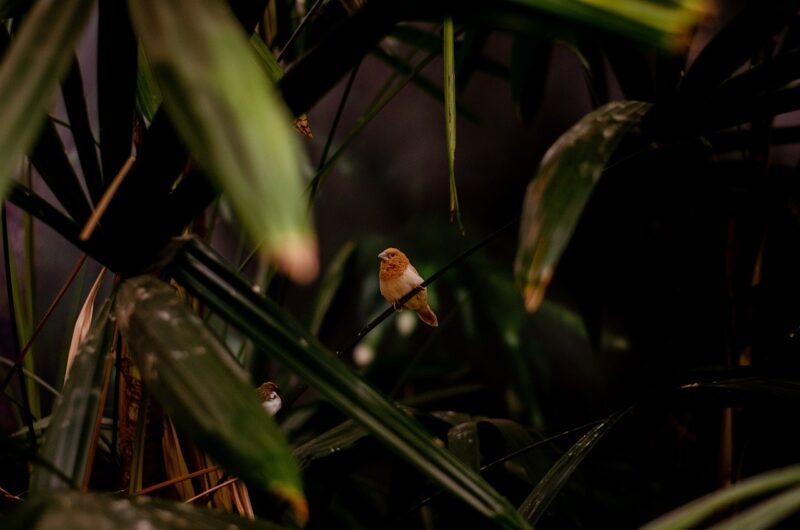How Zoos Are Adapting to Create More Natural Habitats for Their Animals
November 16, 2024

In recent years, the approach to animal care in zoos has undergone a remarkable transformation. Gone are the days of simply showcasing exotic creatures in cages; modern zoos are becoming advocates for conservation, education, and the welfare of the animals they house. A primary aspect of this evolution is the design and construction of more natural habitats that closely resemble the animals’ wild environments. In this article, we will explore how zoos are adapting to create more natural habitats for their animals, the benefits of these changes, and the impact on conservation efforts.
1. The Shift in Zoo Philosophy
In the past, many zoos operated under a philosophy focused on entertainment and display. Animals were often kept in barren enclosures that didn’t fulfill their physical or psychological needs. However, as our understanding of animal behavior has improved, the industry has recognized that naturalistic habitats are essential for the wellbeing of zoo animals.
– From Exhibits to Environments: Modern zoos are designing exhibits that mimic the animals’ native habitats, providing them with enriched environments full of climbing structures, water features, and hiding spots.
– Encouraging Natural Behaviors: These natural habitats allow animals to express behaviors such as climbing, foraging, and socializing, which are crucial for their mental health.
This shift not only benefits the animals but also enhances visitors’ experiences, allowing them to witness more authentic behaviors in their naturalistic settings.
2. Key Features of Natural Habitats
Creating natural habitats requires careful planning and design that takes into account the unique needs and behaviors of each species. Here are some key features that modern zoos incorporate:
– Diverse Vegetation: Natural habitats are filled with a variety of plants that not only provide shade and hiding places but also mimic the animals’ original ecosystems. Zoos may use native plants to attract local wildlife or enhance the aesthetic value of the exhibit.
– Water Sources: Many animals thrive near water, so creating ponds, streams, or waterfalls can promote natural behavior and provide hydration.
– Complex Structures: Climbing structures, rocks, and varied terrain encourage animals to explore and utilize their enclosures, promoting physical activity.
– Spaces for Social Interaction: Group-living species need space to socialize and establish hierarchies. Natural habitats allow groups to interact in a more meaningful way.
Through these features, zoos create environments where animals can thrive, leading to better health outcomes and more active, engaged displays for visitors.
3. The Science Behind Habitat Design
Zoo professionals collaborate with ecologists, architects, and animal behaviorists to create habitats based on scientific principles that enhance animal welfare.
– Behavioral Studies: Research into species-specific behaviors helps zoos understand what environments best meet the needs of individual animals. Behavior enrichment strategies are also employed to keep animals engaged and active.
– Environmental Enrichment: Incorporating enrichment activities such as puzzle feeders, sensory experiences, and opportunities for exploration encourages animals to engage with their environments and reduces stress.
– Adaptive Management: Zoos utilize data and feedback from animal keepers to continuously adapt habitats over time. This ensures that the environments remain suitable for the needs of the animals.
These scientific methodologies are pivotal in the ongoing development of habitats that not only look appealing but also function effectively for the welfare of its residents.
4. Benefits for Conservational Efforts
The advancements in zoo habitat design also have significant implications for conservation efforts.
– Education and Awareness: Naturalistic exhibits provide visitors with a chance to learn about ecosystems and the importance of conservation in a more immersive environment. Seeing animals thrive in habitats that closely resemble their wild homes can foster a deeper appreciation for wildlife.
– Breeding Programs: More natural habitats have improved breeding success for many species that are in decline in the wild. Zoos can support conservation genetics by maintaining healthy, genetically diverse populations.
– Research Opportunities: Modern exhibits provide a unique platform for studying animal behavior, ecology, and health, contributing valuable data that can benefit wild populations.
By reimagining how animals are housed, zoos have a powerful tool to foster a positive dialogue about conservation while championing their cause through successful rehabilitation efforts.
5. Examples of Successful Habitat Transformations
Numerous zoos around the world are leading the charge in creating natural habitats. Here are a few exceptional examples:
– San Diego Zoo: Renowned for its commitment to conservation, the San Diego Zoo has developed the “Africa Rocks” exhibit which showcases a variety of African species while closely mimicking their natural environments.
– Cincinnati Zoo: The Cincinnati Zoo’s Gorilla World features lush foliage and climbing structures that promote social behaviors among their troop of gorillas.
– Melbourne Zoo: Here, the new “Gumboots and Tree-tops” exhibit allows visitors to engage with native Australian wildlife in a habitat that mirrors their natural home.
These transformations reflect a commitment to animal welfare, conservation, and education while engaging visitors in ways that were unimaginable just decades ago.
Conclusion
The evolution of zoos toward creating more natural habitats represents a holistic shift in the care and presentation of animals. By prioritizing animal welfare and understanding the critical aspects of their environments, zoos are better positioned to contribute to global conservation efforts. As we continue to learn more about animal behavior and ecology, the goal remains to bridge the gap between wildlife preservation and education, ensuring that future generations recognize the importance of protecting our planet’s diverse life forms. With ongoing innovation and commitment to improvement, the role of zoos is more vital than ever.
The journey toward creating natural habitats is not merely a trend; it is a vital part of safeguarding the future of our planet’s wildlife. As patrons, we can support these efforts by visiting, learning, and advocating for responsible wildlife conservation practices.








